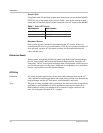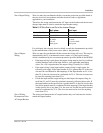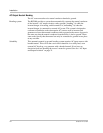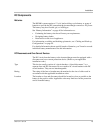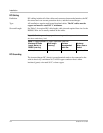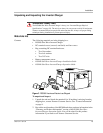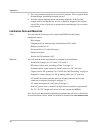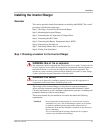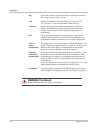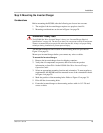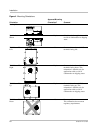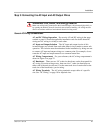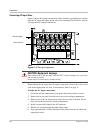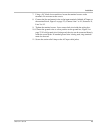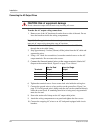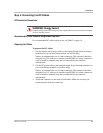
Installation
18 975-0171-01-01
Dry Do not allow water or other fluids to drip or splash on the inverter.
Do not expose to rain, snow or water.
Cool Normal air temperature should be between 32 °F and 122 °F
(0 °C and 50 °C)—the cooler the better within this range.
Clearance Allow as much space around the inverter/charger as possible.
Xantrex recommends that other objects and surfaces be at least
3 inches (76 mm) away from the ventilation openings for best
performance.
Safe Locate the inverter/charger away from battery in a separate well
ventilated compartment. Do not install the inverter/charger in any
compartment containing flammable gases or liquids like gasoline.
Close to
battery
compartment
The length and size of your DC cables will affect performance. Use
the DC cables recommended in Table 3 on page 14. The unit should
not be installed in the battery compartment due to the possible
presence of explosive hydrogen gas from the batteries.
Protected
from battery
acid and gases
Never place the inverter/charger directly above the batteries—gases
from battery will corrode and damage the inverter/charger. If the
inverter/charger is installed in a compartment above the batteries,
make sure there is a solid, gas-impermeable wall dividing the two
compartments.
Never allow battery acid to drip on the inverter/charger or its wiring
when filling the batteries or reading their specific gravity.
Orientation To meet regulatory requirements, the RS3000 must be mounted in
one of the approved mounting orientation. See Figure 4 on page 20.
WARNING: Fire Hazard
Mount the RS3000 only in an approved orientation.



